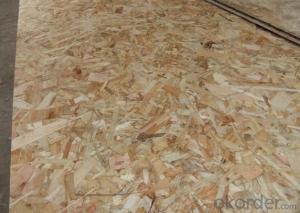When embarking on a DIY project or a professional woodworking task, one of the first decisions you’ll need to make is selecting the right sheet of plywood. This versatile material is a staple in construction and furniture making, but with so many options available, choosing the right one can be daunting. Fear not! We’re here to guide you through the process, ensuring you end up with the perfect plywood for your project.
The Wonders of Plywood
Plywood is a type of engineered wood that consists of thin layers of wood veneer, known as plies, which are glued together under heat and pressure. The layers are arranged with their grain directions alternating at 90-degree angles, which gives plywood its exceptional strength and stability. It’s this unique construction that makes plywood a favorite among woodworkers and a go-to material for a wide range of applications.
Why Plywood Matters
Before we dive into the specifics of choosing plywood, it’s important to understand why this material is so crucial for your project. Plywood offers several advantages:
– Durability: The cross-grain layers make plywood less likely to warp or crack compared to solid wood.
– Cost-Effectiveness: It’s often less expensive than solid wood, especially for larger sheets.
– Variety: Plywood comes in a wide range of types, grades, and thicknesses, allowing you to find the perfect fit for your needs.
– Workability: It’s easy to cut, shape, and finish, making it a great choice for both beginners and experienced woodworkers.
The Plywood Family
Now, let’s meet the family of plywood options you might encounter:
– Softwood Plywood: Made from coniferous trees, it’s affordable and widely used for general construction and furniture making.
– Hardwood Plywood: Durable and attractive, it’s often used for decorative purposes and where a high-quality finish is required.
– Marine Plywood: Specifically treated to resist moisture, it’s ideal for boat building and outdoor projects.
– Baltic Birch Plywood: Known for its smooth surface and high-quality construction, it’s a favorite for furniture and high-end cabinetry.
– Okoume Plywood: A lightweight alternative, often used in the aviation industry and for applications where weight is a concern.
Choosing the Right Plywood for Your Project
Here’s where the rubber meets the road. To choose the right plywood, consider the following factors:
– Project Requirements: What will you be using the plywood for? Different projects call for different types of plywood.
– Budget: Plywood can vary in price, so knowing your budget can help narrow down your options.
– Aesthetics: Some plywood types are more visually appealing than others, which might be important for your project.
– Durability and Strength: Consider the environment where the plywood will be used and the load it will bear.
– Availability: Not all types of plywood are available everywhere, so you might need to consider what’s readily accessible.
The Art of Plywood Selection
When you’re standing in the lumber aisle, here are some practical tips to help you choose the right plywood:
1. Look at the Grade: Plywood is graded based on the quality of the plies and the presence of defects. The higher the grade, the fewer defects and the better the appearance.
2. Check the Veneer: The outer layers of plywood are the veneer. Ensure they are free from significant blemishes and have a consistent pattern.
3. Consider the Core: The inner layers of plywood can be made from various materials. Some are more robust and stable than others.
4. Examine the Adhesive: The glue that holds the layers together should be strong and durable. Water-resistant adhesive is preferable for outdoor projects.
5. Feel the Thickness: Plywood comes in various thicknesses. Choose the one that suits the structural needs of your project.
6. Inspect the Edges: The edges should be smooth and free from gaps or delamination.
7. Ask for Samples: If possible, ask for a sample piece to test the plywood’s workability and finish quality.
Plywood and Your Project’s Success
The right plywood can make or break your project. By taking the time to choose wisely, you’re investing in the longevity, stability, and appearance of your finished piece. Remember, quality plywood is not just about the price tag; it’s about finding the perfect balance of performance and cost.
Final Thoughts
In conclusion, selecting the right sheet of plywood is a critical step in any woodworking project. Whether you’re building a bookshelf, crafting a piece of furniture, or embarking on a larger construction task, the right plywood will serve you well. Take your time, consider your options, and don’t be afraid to ask for advice. After all, a well-chosen plywood can be the foundation of something truly remarkable.
So, the next time you’re faced with the plywood selection dilemma, think about the project’s needs, your personal preferences, and the practical aspects of the plywood itself. With a bit of research and a keen eye, you’ll be well on your way to choosing the right plywood for your project. Let’s make some beautiful things together!

